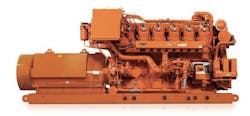Leveraging SCADA for Workforce Efficiency
Wonderware System Platform and other Invensys software applications are being integrated to create the digital oil field, supplying maintenance, engineering, compliance and other departments with real-time data, polled data, alarms, workflow triggers, and even forms to make management of operations more efficient.
Invensys is integrating its Wonderware Workflow and Intelligence software with System Platform software to enable this . “We can use Workflow and Intelligence to bridge gaps between people and processes,” says Abdy Jalilvand, North American upstream business manager for Invensys. “Shell uses the concept of ‘bringing work to the workers.’ We want to bring summaries to people in various departments to make sure their asset data, for example, is being collected, monitored, reported and acted upon.”
Jalilvand spoke at the Invensys Software Conference along with Paul James, an Invensys principal solution architect for upstream oil/gas, and Joe Hens, vice president of system integrator IPACT, an expert on creating digital workflows. The three discussed integrating System Platform, Wonderware Workflow and remote asset management to leverage data already being collected to eliminate manual processes and associated delays in work order requests.
To better understand the scope of how this works, James says to consider an oilfield setting, where many assets are generating data. “Of course, there’s the drilling asset and production asset, but there are also simple assets: chart recorders, tank level gauges and other such devices from which data is collected and sent to the SCADA system,” he says. In addition, GPS-based devices are tracking generator use location and how long it’s been running. Smart flowmeters, used as sales meters, typically have a small amount of I/O connected to a radio. Other communication assets track power and substation data, water/wastewater data, including frac water management, environmental air/water quality, meteorological data and more.
Each of these assets has an identity—meta data including information about location or the operator/technician assigned to that asset. “Every asset also has I/O, and I/O history matched with meta data is valuable to the end user,” says James.
Data from simple assets may go into a static database, while assets with large amounts of I/O go into a real-time database or historian. “If the SCADA system is already connected to the database or historian, you can make use of the data and use the SCADA system as a common interface,” says James.
As an example, consider a work order request from the field that starts with the standard well management screen on the SCADA system. One click sends the work order information directly into the asset management system, as well as into maintenance reports and handheld devices for assignment and eventual execution. The same data could also go into a Safety Asset Summary Report.
“What’s different about this kind of transfer is that it can be initiated from the field while the operator is at the asset,” says James. “Traditionally the field worker would enter the information on a notepad and the next time he’s in the office he would pass it off to the maintenance department.”
Notes and pictures can be now be uploaded and attached to the work order from the field. The system can also add the GPS location of assets and people so that supervisors can assign resources that are closest.
“The thing that is tricky [for oilfield operations] is Internet connectivity; so we’re looking at SMS messaging rather than 3G/4G connectivity to make assignments,” says James.
Hens says the same interface can also have button added that links to a document management system. It can show a list of all the documents available for the asset, and can assign and launch safe work permits.
Having proven workflow’s capabilities in the oilfield environment, it’s easy to see the kind of value it could bring to any operations with distributed data sources and mobile workers. “Workflow is a toolkit,” Hens says, “that can bring automated document management and asset management capabilities to small and medium companies that still rely on manual processes.”

